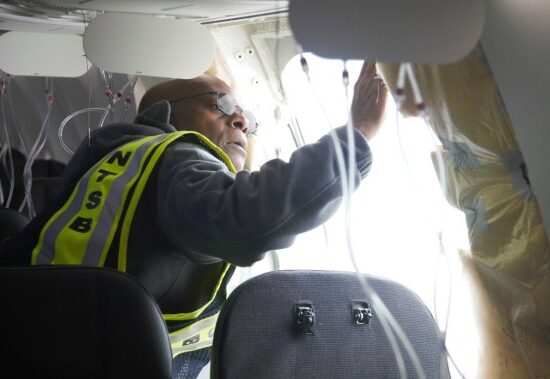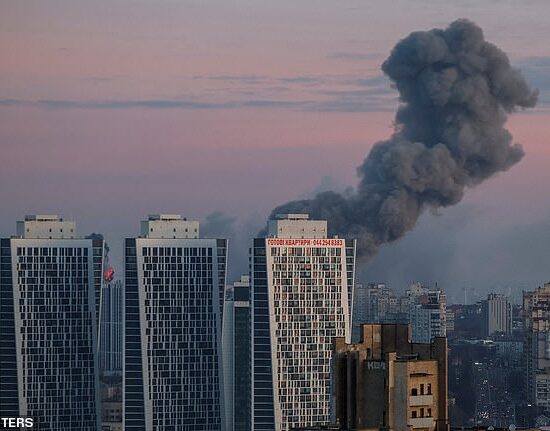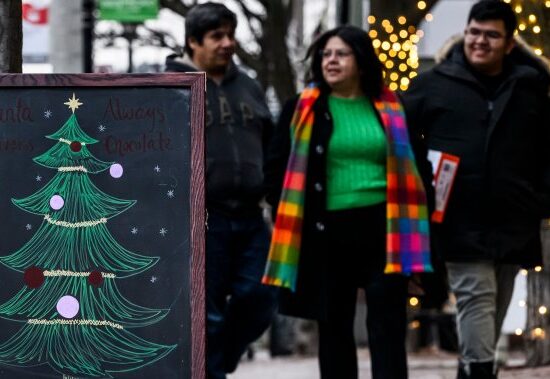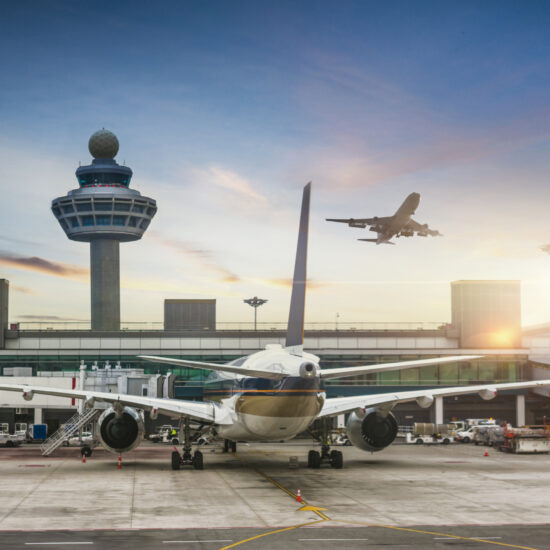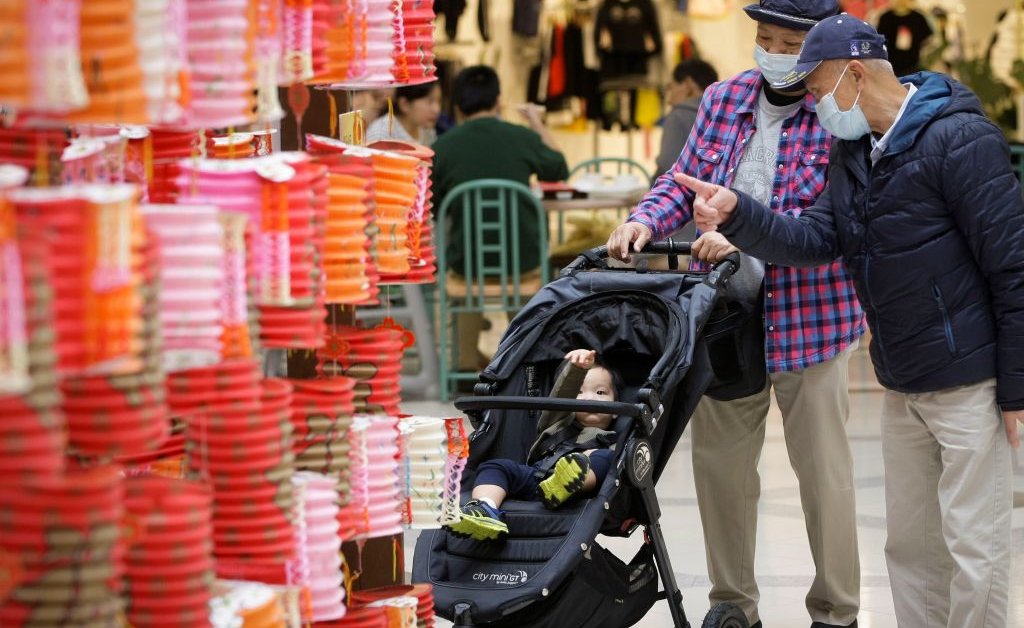
On any given Saturday afternoon at the Crystal Mall in Burnaby, British Columbia, people line around the corner at the tofu shop in the mall’s beating heart—the wet market. Making my way through it, I slip past many, many people speaking various dialects of Chinese. From vendors in stalls, they’re buying, among other items, football-sized heads of Napa cabbage, bags of thinly cut frozen meats for hot pot, and the dried herbs and sea creatures that evoke a certain je ne sais quoi of my mother’s fridge. Surrounding the open-air market are travel agencies, fashion boutiques, shops that sell rice cookers, water boilers, and cell phone accessories.
I could be in Tokyo or Guangzhou, except I am not. Instead, I’m in an air-conditioned complex in a suburb east of Vancouver where Asians account for 60% of the population. And that’s the point: As a gathering place for family and friends, and as a retail portal to their countries of ancestry, malls have become the heart of Asian American community.
In the so-called “ethnoburbs” like Los Angeles, San Francisco, Toronto, and Washington, Asian malls first began to appear in the 80s and 90s. “The pressure to appeal to non-Chinese shoppers or diners casually disappeared,” Hua Hsu writes, explaining the advent of Asian malls in the Silicon Valley in his acclaimed memoir, Stay True. “The concept of ‘mainstream’ no longer held.” Bucking retail headwinds like the rise in online shopping and the demise of the department store that have caused the number of shopping malls to plummet from their high of 2,500 in the ‘80s to only 700 in 2022, Asian malls have become the new Chinatown, Koreatown, and Little Saigon.
Born in Hong Kong but raised in Vancouver, I work through my own ambivalent relationship to my heritage every time I step foot in a shopping mall. Growing up in the suburbs in the ‘80s, I was shuttled back and forth from mall to mall. Sometimes they were enclosed malls, at other times strip malls, from one Asian restaurant and shop to another as my parents, who’d outgrown the Chinatown that first welcomed them in the ‘70s, connected with friends and family. The meals felt long and pointless, the same way Chinese-language school did. And I was irked by how Hong Kong Chinese style and culture seem to revolve around prosperity and conspicuous consumption, something that presaged my pre-grunge years. Also, my parents’ friends who routinely mispronounced my first name as “Kelvin.”
I can already imagine elders spitting out their Iron Buddha tea in a dim sum hall at my blasphemy. Chinatowns, the ones that are over a century old, usually somewhere in a city’s downtown area, are the traditional homes of the Asian diaspora. These ethnic enclaves were formed at the turn of the 20th century, as the Gold Rush and later railroad construction brought over droves of Chinese from Guangdong province until racist restrictions stopped further migration across the Pacific. It’s in Chinatowns (which often held space for other non-white minorities), that the Chinese diaspora weathered homesickness, scapegoating as sources of disease and low-wages, and racist riots, rallied to support democracy back in their homeland, and found work and housing from various tongs or fraternal organizations.
That same tea-spitting elder might also point out that inner-city Chinatown is already in a tough spot. Buffeted by anti-Asian violence and COVID-19 restrictions, Chinatowns are seeing diminished retail activity and fewer visits from tourists. But maybe I should cool it with my diss take.
Take my word that I’m not a hater. I spent parts of my childhood in Vancouver’s Chinatown. I still visit regularly and whenever an elderly senior in mismatched outerwear and face visor shuffling down the street, I think I see my recently deceased grandmother and my heart skips a beat.
But the Chinatown of arched gateways, single-room occupancy hotels, and mahjong tiles clacking from the second story over a greengrocer represents only one part of the Asian immigrant saga. In the Asian mall, we get the next chapter, and full story, of migration.
Read More: How the Asian Golden Hour Dawned
We get the Taiwanese and Vietnamese immigrants who came in the ‘60s and ‘70s, the Koreans and Hong Kongers who showed up in the ‘80s and ‘90s, the mainland Chinese who arrived in the last two decades. Some of these migrants fled political and economic turmoil, looking for a better life for their children. Others have arrived with money and professional degrees, and in the Asian mall we see the recent prosperity of Asia reflected back to us, be it in shops that sell luxury handbags or one that hawks space age Japanese toilets.
The Asian mall can be a site of community outside of shopping and eating. For nearly three decades in Richmond, a Vancouver suburb where Asian communities form nearly 70% of the total population, one mall hosted over 200 practitioners of tai chi every morning. In 2019, in a different Richmond mall, Aberdeen Centre, which features Korean grocery chain H Mart as an anchor store, supporters of the Hong Kong democracy movement gathered on the balconies surrounding its centerpiece fountain to sing the democracy movement’s anthem, “Glory to Hong Kong.”
Like many wayward, white-washed Asians, it’s always my stomach that leads me back to my heritage. “The food court is the perfect place to people-watch while sucking down salty, fatty jjajangmyeon,” Michelle Zauner says about the H Mart in Elkins, Pennsylvania in her bestselling food memoir Crying for H Mart. “I think about my family who lived in Korea, before most of them died, and how Korean-Chinese was always the first thing we’d eat when my mom and I arrived in Seoul after a 14-hour flight from America.”
Back at the Crystal Mall, I zip up the escalator to find their food court. Here I find over two dozen stands, almost every one of them selling a regional variation of Chinese food: Hong Kong and Shanghai dishes like rice rolls and xiao long bao are well represented, as is Taiwanese bubble tea. There are also harder-to-find delicacies from Xian and Wuhan. (And, as you’d hope and expect, not one Panda Express.) Just like in Chinatown, none of these places accept credit cards as payment. At lunchtime, it’s nearly impossible to secure a free table: They’re all taken up by families and packs of teenagers. After I settle on a jianbing, a type of savory crepe that originated in Beijing, I hold up my iPhone before I eat, because as we say in Cantonese, and now in every other language, “The camera eats first.”
More Must-Reads From TIME









